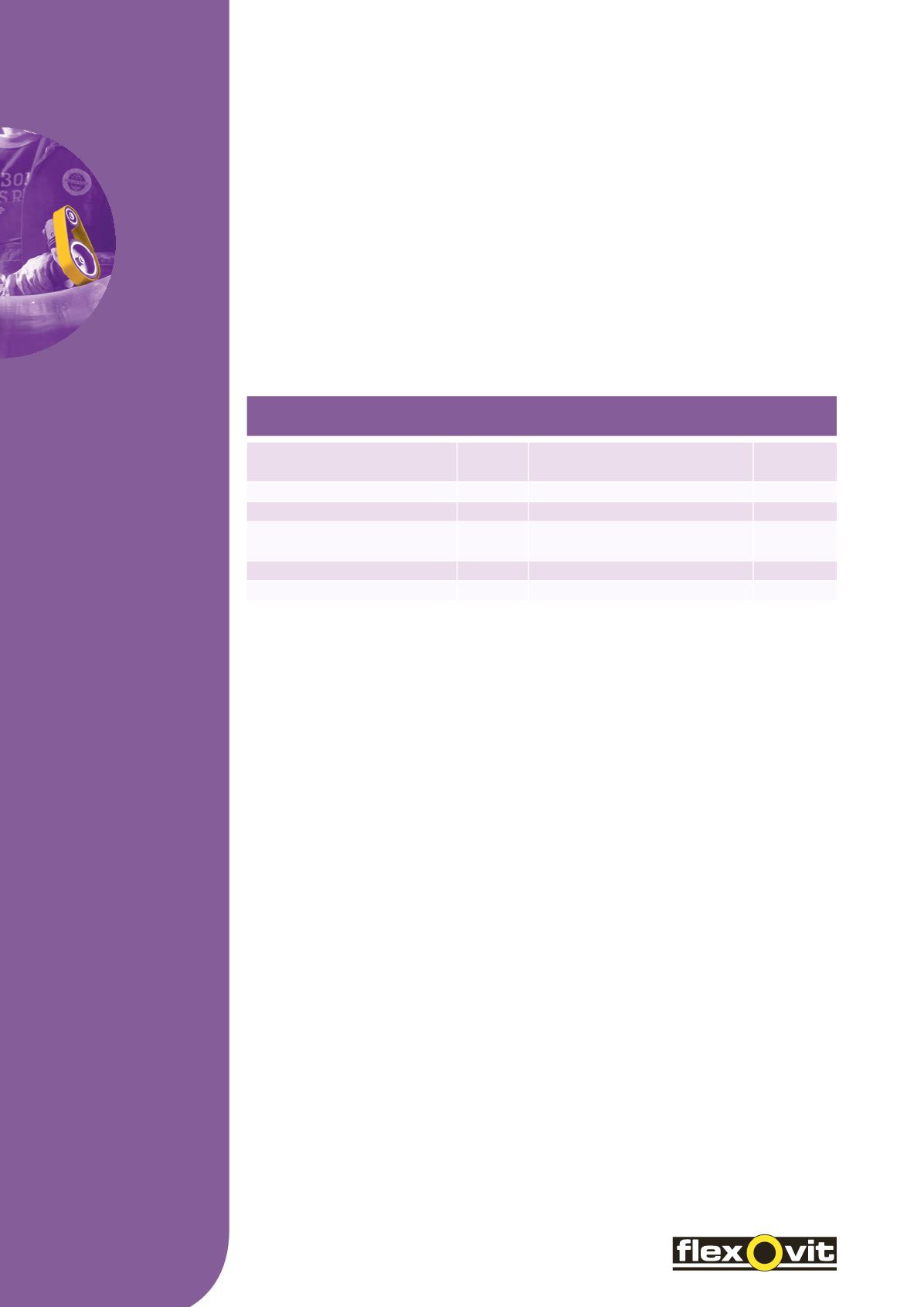

COATED
ABRASIVES
122
The results achieved when sanding with belts depends on several factors including:
• The machine condition and available horsepower
• The belt speed
• The grinding pressure
• The contact wheel
• The choice of the belt in relation to the shape of the part and material type
• The use of coolant (when machine and belt allows)
BELT SPEED
The speed of the belt has a direct relationship with its cut rate, as well as the amount of heat generated,
the surface finish achieved, and the stress on abrasive grain. Some abrasives like zirconia alumina and ceramic,
support much higher stresses because they have a better resistance to uncontrolled fracture. Some materials
are more sensitive to heat generation: The chart below gives the recommended speed range according to material.
BELTS
GRINDING PRESSURE
The amount of grinding pressure depends on:
• The force used
• The size of the contact area between the belt and the workpiece
• The backing on which the belt runs (generally a contact wheel)
Higher pressure increases the cut rate and the amount of heat generated increases the stress on the individual
abrasive grain (a minimum stress is necessary to achieve a controlled fracture of the abrasive grain),
and generally generates a rougher finish.
RECOMMENDED GRINDING BELT SPEED
Heat sensitive materials,
plastics, etc.
5-15m/s
Stainless steel, high-speed steel
and tool steel
20-30m/s
Sintered metals and carbides
8-15m/s Grey cast iron and cast steel
30-40m/s
Titanium and similar alloys
8-15m/s Carbon steel
30-40m/s
Glass, porcelain and special steel
8-15m/s
Brass, copper, zinc, bronze
and tin
25-35m/s
Heat-resistant plastics
20-30m/s Aluminium and light metal
20-35m/s
Wood
15-30m/s Varnish
10-15m/s


















